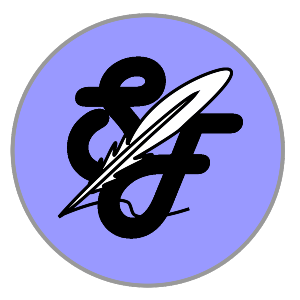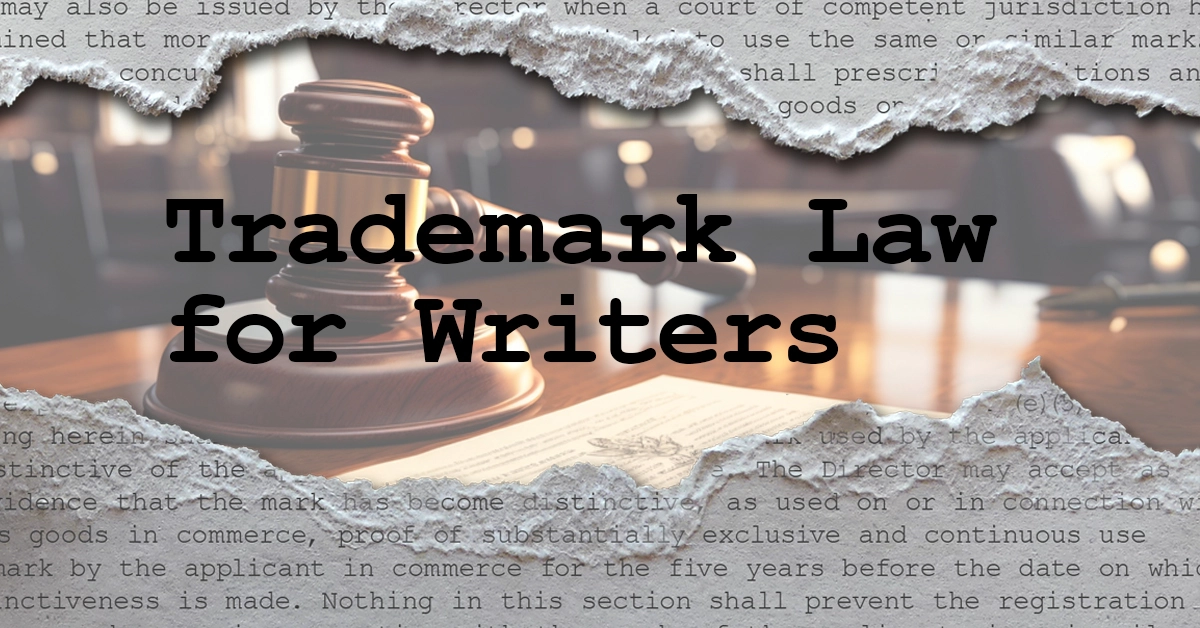Using a trademarked product in your fiction can set a scene or tell the reader about a character. Sure, you can have someone drink a soda, but so much more is conveyed to the reader if that soda is described as a Coke, a Pelligrino blood orange, or a Kroger Grape.
However helpful using trademark products may be, writers can be a little skittish of using them out of fear of receiving a “cease and desist” letter or a lawsuit from a law firm or, maybe worse, rejection from a publisher with the same legal fears. Following is some general information on trademarks. This information is based on U.S. law, although, thanks to international conventions, trademark law can be similar in many countries. Since every case is specific and laws do change, please do not take the following as legal advice. If you ever have questions about trademark usage, please consult an attorney. Many states have free legal services for qualifying artists.
What is a trademark?
A trademark is a word or symbol, but could be a sound or color that is used to identify a good or service, such as Coca for a cola, the Nike swoosh symbol, the three musical tones for NBC, or the pink color of Owens Corning fiberglass. Place names, like cities and towns, are, generally, not trademarks. Trademarks are often noted with a “™” or “®”. These trademark symbols connote whether the trademark owner is claiming a common law trademark right or has federally registered the trademark. Some lawyers advise using the “™” or “®” at least on the first use of the trademark in a work.
What do I have to Worry About?
The most common trademark disputes are over trademark infringement, which is someone else using a trademark or a similar appearing trademark, in a way that “causes likelihood of confusion in the marketplace.” Generally, different products may share the same trademark so long as their customers are not confused as to the origin of the product. Think Dove beauty products and Dove chocolates. It is, generally, not trademark infringement to call a Ford truck a “Ford truck” in your story as you are simply describing the truck.
Famous trademarks receive additional protection against trademark dilution. Trademark dilution may occur through “blurring” or “tarnishing.” Blurring is when someone tries to use a famous trademark for a different product or service, resulting in a lessening of uniqueness for the trademark. For example, if you were to come out with a Coca-Cola line of clothing, the Coca-Cola beverage company may have a claim of blurring.
Tarnishing is when someone uses someone else’s trademark in a way that may tarnish that product’s reputation. The famous tarnishing case involved someone trying to register “Candyland” for an erotic website. Hasbro, which has owned the Candyland trademark for its game since 1951, successfully sued to change the website’s name. While a single book title may not be a trademark, a title for a series of books could be. For example, Simon and Schuster own the “Hardy Boys” and “Nancy Drew” trademarks.

Trademark owners are also concerned with writers using their trademark as a noun or verb and with writers disparaging their products. Trademarks that turn into a common name for a product undergo “genericide” and no longer have trademark protection. Genericide is why you ride an escalator and not an Escalator® moving stairs. To protect against genericide, companies send corrections.
The Xerox Corporation famously sent then President Reagan a letter asking him to stop saying he “xeroxed” something and, instead, “say photocopy.” To protect against genericide, trademarks, such as Alpo® dog food, are often used with their product. That doesn’t mean you must always put the trademark next to the product. “Where are the chips?” “The Doritos are on the counter” should be acceptable trademark use.
Trademark owners may use trademark law to ensure their trademarked products are shown in the best light, which may result in some accommodations. In the novel “Breakfast of Champions,” there is a notice in the beginning of the book informing the reader that the title of the book should not be associated with the General Mills breakfast cereal trademark. A claim of tarnishment may be defeated under the fair use defense if the trademark use is part of critical commentary or parody. The problem with the fair use defense is that it is a defense. You probably don’t want to go to court to defend yourself against a trademark claim.
Parting Words
So long as a writer uses a trademark product as a descriptor, there should be no problems. Trademark owners just want to be sure their trademark is used correctly, modifies the appropriate noun, and, preferably, the product is not shown in a negative light.

When not working on his science fiction mystery novel, “Knock, Knock”, Simon serves as in-house counsel, generally for technology companies. Some of Simon’s legal work involves the creation, licensing, and protection of trademarks, copyrights, and other intellectual property as well as cybersecurity, privacy, and AI law.


Great post, Simon! The Xerox company had a long-running ad in Writer’s Digest Magazine. “Please remember that Xerox begins with an X and ends with an (R).”
Thanks Kayelle. Like that Xerox ad. Had not heard of it before.